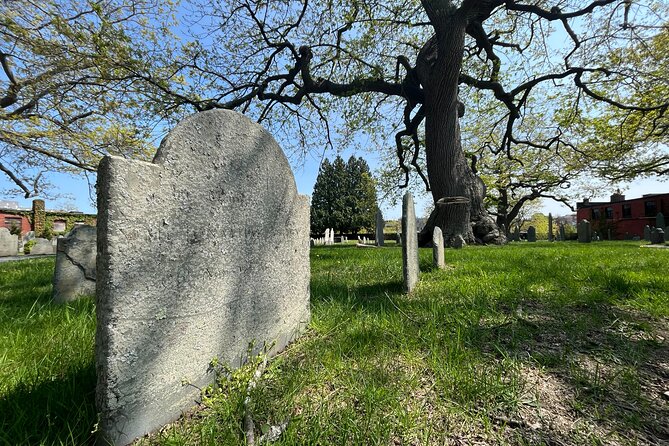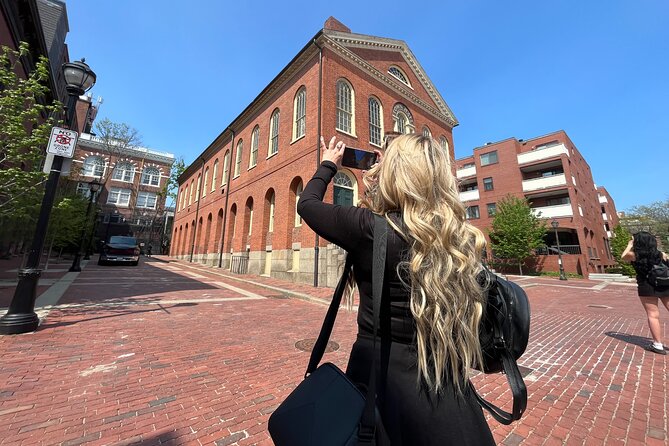In the quiet village of Pendleton, nestled deep in the heart of the English countryside, an elderly woman named Agnes has always been regarded with suspicion and fear. Her knowledge of herbs and healing remedies, her solitary nature, and her uncanny ability to predict the future have earned her a reputation as a witch.
But where did this notion of witchcraft originate? How did ancient beliefs and practices give rise to the figure of the witch? Join us as we peel back the layers of history, exploring the origins of witches and witchcraft, and uncovering the fascinating tales that have shaped our understanding of these mysterious beings.
Prepare to be enchanted, as the secrets of the occult are revealed.
Good To Know

- Witchcraft has ancient roots and is associated with pagan rituals and ceremonies.
- Witches faced intense persecution due to fear and beliefs in their alleged involvement with dark forces.
- The fear of witchcraft was deeply ingrained in medieval European society and led to widespread trials, torture, and executions.
- The Salem Witch Trials were a dark chapter in American history, with twenty people being executed and many others imprisoned.
Ancient Beliefs and Practices

Ancient beliefs and practices surrounding witchcraft have captivated cultures throughout history, weaving a complex tapestry of folklore, superstition, and spiritualism.
In ancient times, witchcraft was often associated with pagan rituals and ceremonies. These rituals played a significant role in the lives of ancient civilizations, serving as a means to communicate with the spiritual realm and harness supernatural powers. Pagan rituals involved the use of various witchcraft symbols, which held deep meaning and represented different aspects of the craft. These symbols, such as the pentagram, the moon, and the cauldron, were believed to contain mystical energies and served as a connection to the spiritual forces of nature.
Through these ancient beliefs and practices, witchcraft became deeply ingrained in the cultural fabric of societies, shaping beliefs and influencing the lives of countless individuals.
Find more activities and experiences we've covered in Salem.
Early Persecution of Witches

During the early centuries, witches faced intense persecution due to widespread fear and beliefs in their alleged involvement with dark forces. The causes and motivations behind the persecution varied, but a common thread was the fear of witchcraft and its potential harm to society.
Many believed that witches were in league with the devil, practicing black magic and causing harm to others through spells and curses. This fear and suspicion led to a relentless campaign to identify and eliminate witches, resulting in widespread trials, torture, and executions.
The impact on society was profound, as the fear of witches permeated every aspect of daily life. People lived in constant fear of being accused of witchcraft, leading to a breakdown of trust and community cohesion.
The persecution of witches left a lasting legacy of fear and superstition that would endure for centuries to come.
Witchcraft in Medieval Europe
The persecution of witches during the early centuries left a lasting legacy of fear and superstition, which continued to shape beliefs and attitudes towards witchcraft in Medieval Europe.
In this period of medieval history, witchcraft beliefs were deeply ingrained in society. The Church played a significant role in perpetuating the fear of witchcraft, viewing it as a threat to Christian faith. Witch hunts became widespread, with accusations often based on hearsay and superstition.
The accused were believed to have made pacts with the devil, practiced dark magic, and caused harm to others through spells and curses. The fear of witches permeated every aspect of daily life, leading to the torture and execution of countless individuals, predominantly women.
The witch trials of this era serve as a chilling reminder of the power of fear and the devastating consequences of mass hysteria.
The Salem Witch Trials
The Salem Witch Trials, a dark chapter in American history, unfolded in the late 17th century. These trials had a profound impact on the community of Salem, Massachusetts and left a lasting mark on the nation’s consciousness.
The historical context of the witch trials is essential to understanding their significance. At the time, the Puritan community in Salem was deeply religious and held a strong belief in the supernatural. Fear of witches and the devil was pervasive, and accusations of witchcraft were taken seriously.
The trials resulted in the execution of twenty people and the imprisonment of many others. The hysteria and paranoia that fueled the trials revealed the dangers of religious fanaticism and the fragility of justice in times of fear.
The Salem Witch Trials serve as a cautionary tale and a reminder of the consequences of unchecked prejudice and hysteria.
Modern Witchcraft and Wicca
After the dark chapter of the Salem Witch Trials, a new era emerged, giving rise to modern witchcraft and the practice of Wicca. Modern witchcraft has evolved to embrace feminist ideologies, empowering women to reclaim their power and challenge societal norms.
Many modern witches and Wiccans view their craft as a form of spiritual expression and personal growth. Wicca, a modern pagan religion, is deeply rooted in nature and emphasizes the worship of a goddess and god. Wiccan rituals and spells are performed to harness energy, manifest intentions, and connect with the divine. These practices often involve the use of herbs, crystals, candles, and incantations.
Modern witchcraft and Wicca have gained popularity in recent years, attracting individuals who seek a spiritual path that honors their connection to the earth and celebrates personal empowerment.
- Requiem for Salem Walking Ghost Tour
- Mysteries and Murders of Salem Guided Night-Time Walking Tour
- The Salem Witch Walk
- Triple Threat Combo Pass: 3 TOURS (3:30pm, 5pm, & 7pm or 8:30pm)
- Salem “Hocus Pocus” Movie Locations Tour (30th Anniversary)
- Salems Dark History & Witchcraft Hysteria Guided Walking Tour
The Influence of Magic and Occult in Popular Culture
Magic and the occult have become pervasive in popular culture, captivating audiences with their mysterious allure and enchanting possibilities. From literature to films, the influence of magic can be seen in various forms, shaping the way we perceive witches and witchcraft.
Here are four key ways in which magic and the occult have made their mark on popular culture:
Influence of Magic in Literature: Magic has long been a prominent theme in literature, with authors like J.K. Rowling and Neil Gaiman weaving intricate tales of wizards, witches, and fantastical worlds. These stories not only entertain but also inspire imagination and ignite a sense of wonder.
Representation of Witches in Films: Witches have been portrayed in a multitude of ways on the big screen, ranging from the wicked and malevolent to the wise and benevolent. Iconic films like ‘The Wizard of Oz’ and ‘Harry Potter’ have shaped our perceptions of witches, creating lasting and memorable characters.
Popularity of Occult-themed TV Shows: Television shows centered around magic and the occult, such as ‘Charmed’ and ‘American Horror Story: Coven,’ have gained a significant following. These shows explore the world of witchcraft, exploring its mysteries and complexities, and captivating audiences with their dark and intriguing storylines.
Influence of Magic in Fashion and Art: The influence of magic and the occult can also be seen in the world of fashion and art. From mystical symbols and witchy aesthetics to occult-inspired designs, these elements have found their way into various artistic mediums, allowing individuals to express their fascination with magic and the supernatural.
Common Questions
How Were Witches Viewed and Treated in Other Parts of the World Outside of Europe?
Witches in non-European cultures were often viewed differently and treated based on the beliefs of the indigenous communities. Witchcraft practices varied widely, with some cultures revering witches as healers and spiritual leaders, while others feared and persecuted them.
What Were Some Common Misconceptions About Witches and Witchcraft During the Early Persecution Period?
During the early persecution period, there were many misconceptions about witches and witchcraft. These misunderstood practices were often associated with devil worship, evil spells, and causing harm to others.
How Did the Perception and Portrayal of Witches Change During the Renaissance Period?
During the Renaissance period, the perception and portrayal of witches underwent a significant transformation. They were often depicted as powerful, seductive figures who used magic for their own gain, leading to a heightened fear and persecution of alleged witches.
Were There Any Significant Differences Between the Salem Witch Trials and Other Witch Trials in Europe?
The Salem witch trials and other European witch trials had significant differences. While both caused hysteria and fear, the Salem trials focused on a small community, resulting in a higher execution rate, and had a lasting impact on American society.
How Has the Practice of Modern Witchcraft Evolved and Adapted Over Time?
Modern witchcraft practices today have evolved and adapted over time, drawing influences from various sources such as folklore, pagan traditions, and contemporary spirituality. These practices encompass spellcasting, divination, herbalism, and rituals, empowering individuals to connect with nature and their own inner power.
The Sum Up
To sum it up, the origins of witches and witchcraft are deeply rooted in ancient beliefs and practices that have fascinated and captivated humanity for centuries. From pagan rituals to the infamous witch trials, the evolution of these mystical arts has left an indelible mark on society.
Today, modern witchcraft and Wicca continue to thrive, while the influence of magic and the occult can be seen in popular culture. The enigmatic world of witches and witchcraft continues to intrigue and bewitch us, keeping the fascination alive.
More Tour Reviews in Salem
Looking for something different? Other Salem activities we've written about
- Pirate Costume Photo Shoot
- Salem Movie Magic Tour: Hocus Pocus and Bewitched locations
- The Ghost Walk. Tortured Souls of Salem
- High Witch History Walking Tour of Salem
- Ghosts of Christmas Past a Haunted Holiday Stroll in Salem
- Ghostly Tales of Salem Walking Tour
- Cemetery and Witchcraft Trials Tour
- Best Hocus Pocus Movies & More Tour
- Spooky Ramen Tours
- Tales of Salem Halloween Guided Walking Tour
- Salem Vintage Postcard Tours
- Experience Authentic Salem Séance with Entry Pass
